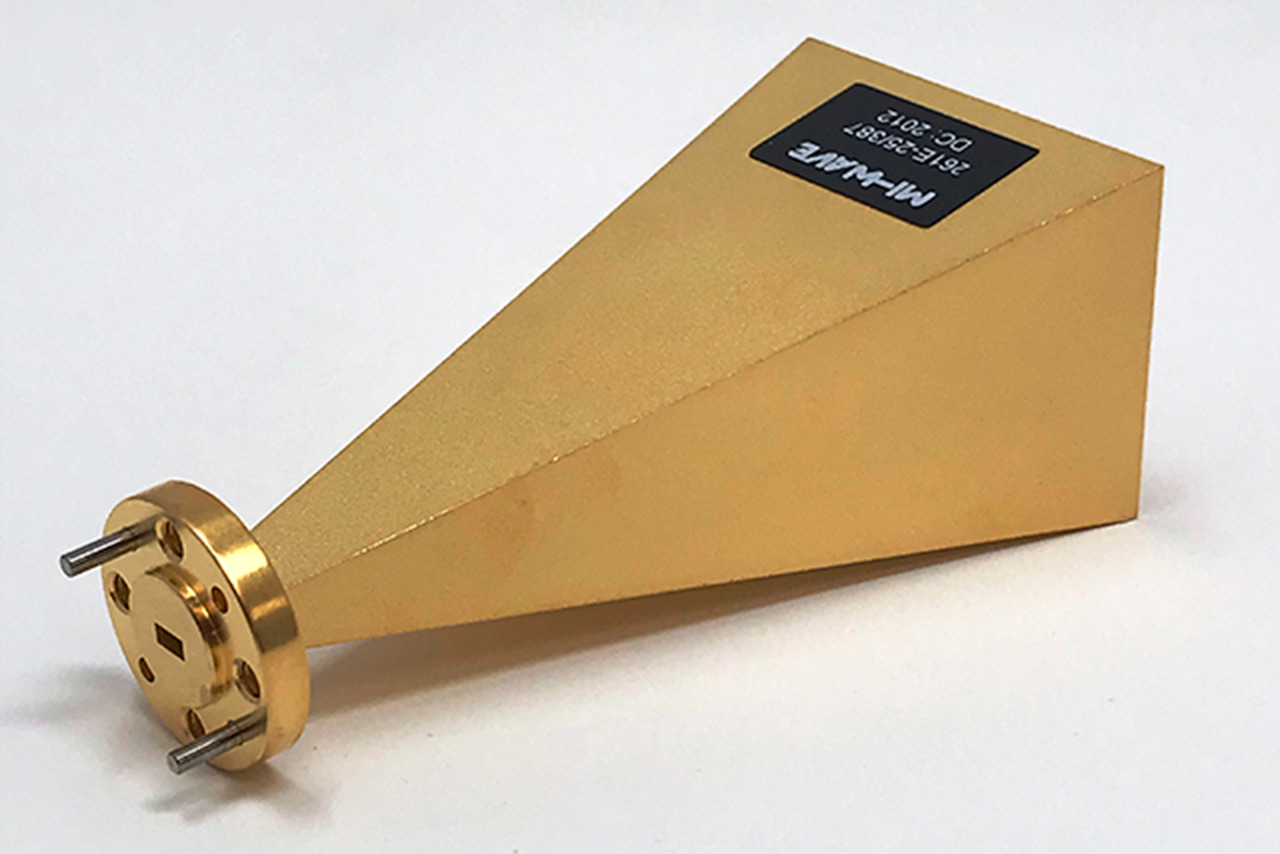Products> Antenna Products > Standard Gain Horns> 261E-20/387 Standard Gain Horns
Description:
Mi-Wave’s WR-12 Gain Horn Antennas operate in the 60GHZ to 90GHz spectrum and are created with the end consumer in mind. We know you need and demand the absolute best when it comes to wr-12 horn antennas and look to provide you with the best solutions possible. Some of the highlights of our wr-12 horn antennas are listed below:
Features
• Made with precise dimensional tolerance control
• Gain calibration is accurate to 0.5 dB over full waveguide bandwidth
Applications
• Low F/D Antennas
• Surveillance Systems
• Offset Feed Antenna
*All data presented is collected from a sample lot.
* Actual data may vary unit to unit, slightly.
*All testing was performed under +25 °C case temperature.
*Consult factory to confirm if material, plating, size, shape, orientation and any electrical parameter is critical for the application as website information is for reference only.
*Millimeter Wave Products, Inc. reserves the right to change the information presented on website without notice as we continue to enhance the performance and design of our products.
E-Band Horn Antennas | WR-12 | 60 – 90 GHz
If you are looking for E-band standard gain horn antennas, then you’ve come to the right place. At Millimeter wave products Inc. (Mi-Wave) we specialize in manufacturing the highest quality standard gain horn antennas for many needs.
What makes our standard gain horns the preferred choice?
Mi-Wave’s 261 E-band Series standard gain horn antennas are fabricated with very close tolerances to ensure the precision of every horn manufactured by Mi-Wave. Each unit is joined to a short section of rectangular wave-guide and terminated in a standard flange. This is critical when you need the best quality millimeter wave products all doing their part in your application.



